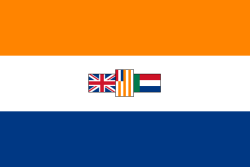
Published date
31 May 1961
Two years after taking office, Verwoerd realised his republican dream, when a White-only referendum supported his plea for a republic. This was also the first time in 12 years of government that the National Party (NP) was able to gain a majority in parliament.
Given this mandate Verwoerd went to London in March 1961 to give formal notice to the Conference of Commonwealth Prime Ministers that South Africa was changing from a monarchy to a republic and to argue his case to remain within the British Commonwealth. This request for a constitutional change would normally have been granted, but because of South Africa's apartheid policy, it was vehemently opposed. Verwoerd then withdrew his application for membership of the Commonwealth.
On 31 May 1961, the Republic of South Africa was established, it ushered in a period in which the existing political trends grew in tempo, scope and force. The application of the policy of separate development was accelerated to such an extent that the Transkei was granted self-government as early as December, 1963, something which a few years earlier not even Verwoerd had foreseen. Except for a temporary set-back in the general election of 1970, the National Party grew steadily stronger. Foreign criticism of South Africa's racial policy constantly increased in intensity as time passed. After Sharpeville (March, 1960) the ANC. and PAC. abandoned their policy of passive resisÂtance and adopted one of armed struggle, and, in reaction against the actions of the revolutionary elements, the South African government adopted legislation which increasingly infringed on the freedom of the individual.
Sources:
1. Muller, C.F.J. (ed)(1981). Five Hundred years: a history of South Africa; 3rd rev. ed, Pretoria: Academica, p. 507.
2. Potgieter, D.J. et al. (eds)(1970). Standard Encyclopaedia of Southern Africa, Cape Town: NASOU.
3. South African History Online. The development and formation of the South African Republic (1961) | link